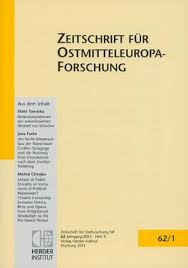Die räumliche Erscheinungsform des Neoabsolutismus – Militärarchitektur in Lemberg und Wien in den 1850er Jahren
The Spatial Manifestation of Neoabsolutism—Military Architecture in Lemberg and Vienna in the 1850s
Author(s): Frank RochowSubject(s): Cultural history, Architecture, Military history, Political history, 19th Century
Published by: Verlag Herder-Institut
Keywords: military architecture; state building; Neoabsolutism; urban planning; representation of power; Lemberg; Vienna;
Summary/Abstract: In this article, the author uses the model developed by Yair Mintzker to link the change in political thinking in the Habsburg monarchy of the 1850s with military architecture. He argues that the experience of a near collapse of the state during the revolution of 1848/49 resulted in an unprecedented domination of the military in the 1850s and a course of modernization that contained, as an essential element, the strengthening of central state organs. Rochow shows how military architecture does not only mirror this process of state building, but was also used to implement the new understanding of the central state. By comparing the developments in Vienna and the Galician provincial capital Lemberg, he illustrates how the instrumental character of military architecture was used to suppress liberal as well as national ambitions directed against the Habsburg monarchy. The similarities between both cities show that within different urban contexts the same ideas led to a dominance of the military by means of architecture, which created, in turn, a uniform meta-space throughout the state. However, the 1850s also witnessed a change in politics. The Crimean War and the severe financial situation of the Habsburg state throughout the period led to an enhanced fortification of places along the external state borders and eventually to the de-fortification of Vienna as the seat of the central powers. This served as a precondition for the transformation of the Habsburg meta-space in favor of a civic element. The emphasis on central military institutions further reveals that plans for a single geographical location were always embedded into state wide considerations. This proves to be especially fruitful for overcoming the dichotomy of center and periphery.
Journal: Zeitschrift für Ostmitteleuropa-Forschung
- Issue Year: 68/2019
- Issue No: 2
- Page Range: 157-188
- Page Count: 32
- Language: German

